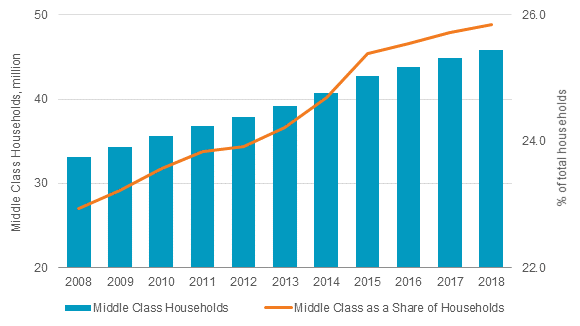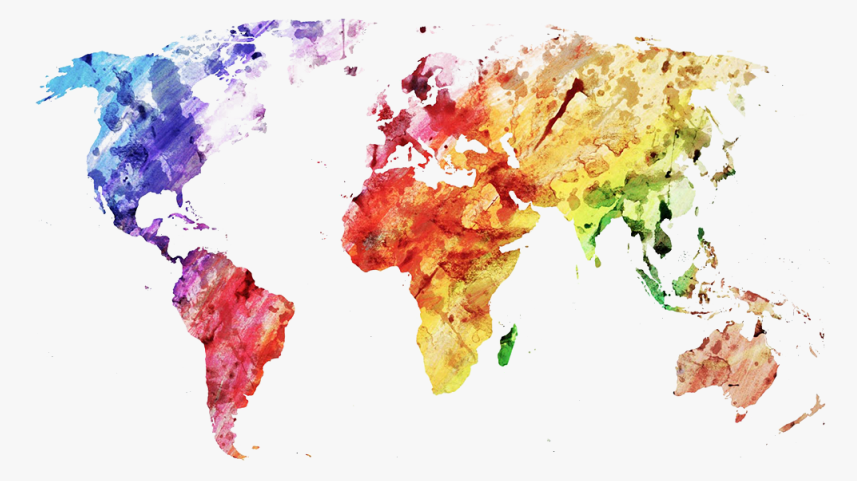Why Latin America?
LATAM is called to keep increasing in importance as a market and global companies are taking notice. Its massive extension and multicultural landscape translate into a very attractive competitive advantage: most of its population can be reached through a certain variety of Spanish.
Our longing for a simplified world
To the innocent eye, from afar, regions and countries might seem homogenous. As your knowledge of a specific land grows, so does your understanding of the differences of its distant locales and sub-cultures. Creating a cohesive identity and setting a common set of rules, signs, and sensibilities is by no means an easy historical process. It took ages to Europe to pull something like the European Union off, and though some common ground has been built, it never ceases to be a plethora of cultures and languages. The same happens in Asia, the Middle West, Africa, and, to a lesser point, in the Americas. Different ethnicities, religions, cultures, and languages…

Our subjective mental representation of the world around us might be the first thing to question in order to capture new markets and opportunities.
In a global market, internationalizing your operations or your content implies not only to attend to the little nuances of producing and distributing to distant markets. It also means having to cope with different cultures and languages. And, as you may already know, the most effective way of selling your product, communicating your message, creating your brand, it all could change depending on the culture and language. Localization is a critical part of going global and that is an undisputed truth. And those who don’t give credit to it, learn it the hard way.
One consistent region
Media Localization in Latin America has a huge advantage when compared to other regions. And this goes without forgetting to acknowledge its multicultural societies and its rich ethnic diversity. The region is considered to be one of the most homogenous in the world. Spanish is widely spoken from Tierra del Fuego to the United States of America. So, even though Latin America is a massive region, with a rich history and different cultures, a single language helps to reduce those distances very effectively. Along with Spanish, we should consider Portuguese. Though only spoken in a single country, it is the native language of 210 million people. As a consequence, if you’d smartly translate to two specific language varieties, your content or product could better reach more than 700 million people.

Language, religion, and similar political and economic processes have created a strong cultural identity in the region.
Two major Spanish audiences
One thing you should consider is that even though European and American Spanish are well understood by those who speak it, both audiences tend to feel a bit alienated when their media is spoken in the variety they don’t use. That’s why internationals such as Disney, Universal, EA, Naughty Dog, or HBO, to name a few, decided to separate the audiences.
European Spanish is spoken by 45 million people. Funny thing, that’s exactly the number of people in the USA who speak it as their first language. But there’s a catch! Spanish speakers in the USA speak a variation of American Spanish, much closer to the neutral “Latin American Spanish” widely used in media productions that are distributed all over the region.
[smartslider3 slider=4]
So, though localizing your content to European Spanish allows you to reach a mature market of 45 million people, localizing your content to American Spanish allows you to reach a diverse and growing market of 455 million instead.
A growing economy with tons of opportunities
Latin America’s economy has been historically dominated by expansion and contraction movements. Fortunately, over the last couple of decades, its economies have grown stronger and middle classes have become larger. Euromonitor International experts have recently pointed out that
“as members of middle classes tend to have better education, the expansion of the middle class will be positive for companies doing business in the region in that it widens the local talent pool and increases the supply of better-skilled labour. This, in turn, will help boost the competitiveness of local businesses.”

Source: Euromonitor International from national statistics
That explains why every conceivable media chart talks about Latin America’s growth rates.
Take by instance gaming. If we consider Year on Year growth rates, Latin America has become the fastest-growing region in the Video Game industry, with an estimated value of $6Bn for 2020. This puts the region, in terms of growth, above North America, Europe, and the Asia Pacific. Industry referents agree that those numbers can only go higher due to economic growth. Content localization could play a significant role by enabling a broader audience to access complex story-driven games. And this is a sensitive point. There’s an unsatisfied demand for some genres that aren’t more popular due to language-related obstacles.

Internet usage is well spread among Latin Americans.
Streaming services are strong and growing stronger in this region too. We have already discussed how Netflix’s international dominance partially rests in its Latin American presence. Disney Plus has recently announced that they will change their original launching schedule (2021) to make it available as soon as possible, expected soon this year. Podcasts growing rates are bigger here than anywhere else too and that’s why industry giants are opening Latin American Business Development units at this moment.

Socializing and entertainment are two important uses of daily time spent on the internet for Latin Americans. Source: Global Web Index.
Internet penetration and social media adoption show risen numbers in Latin America too. This obviously implies digital commerce and marketing going bigger in fertile ground. Don’t we forget that eCommerce unicorns such as Mercadolibre, Rappi, OLX, and Despegar all originated in this region. Combined with some cultural inclinations towards audiovisual content, the region stands out as an excellent place to do branded video content too.

Latin American market has some strong identity of its own.
Wealth and youth are more highly concentrated among digital consumers in Latin America as compared with their non-digital counterparts, according to Forbes. But, at the same time, Latin American digital consumers are more concentrated in the 25-34 age bracket than other regions. That means there’s a mature segment in the region. And it also speaks of the age brackets that could be developed with localization and marketing expertise.
Why Latin America?
Simply because it is a huge emerging market, with some interesting highlights. For starters, a smart single language localization process might allow your production to perform in an almost half a billion people market. If you add Brazilian Portuguese to the localization effort, your audience will surpass the 700 million people. Some other regional audiences might be bigger. But different languages, alphabets, and cultural discrepancies make the localization process much more complex, expensive, and inefficient when compared.
Household income is increasing and audiences are eager to adopt cosmopolitan consuming habits. Still, Latin Americans don’t really need a second language for their daily lives. And though English as a second language has been popular over the decades, even cosmopolitan audiences won’t rely only upon English to consume their Media due to lack of fluency.
Last but not least, social media in Latin America has a particular impact on consumers’ lives, especially for eCommerce. That explains why 82% of people use subscription services for their gaming and digital content.
These elements talk of an expanding market, keen to digital content, and easy to target with little investment and significant return. So, companies who haven’t yet localized their content to Latin America should be seriously asking themselves: Why not?












